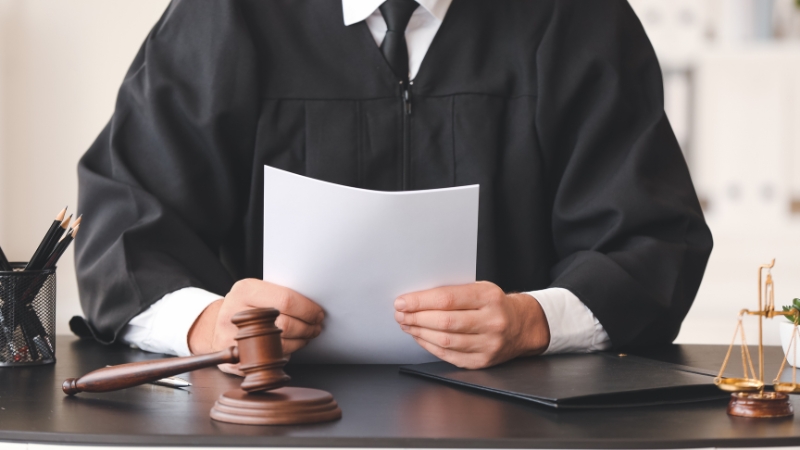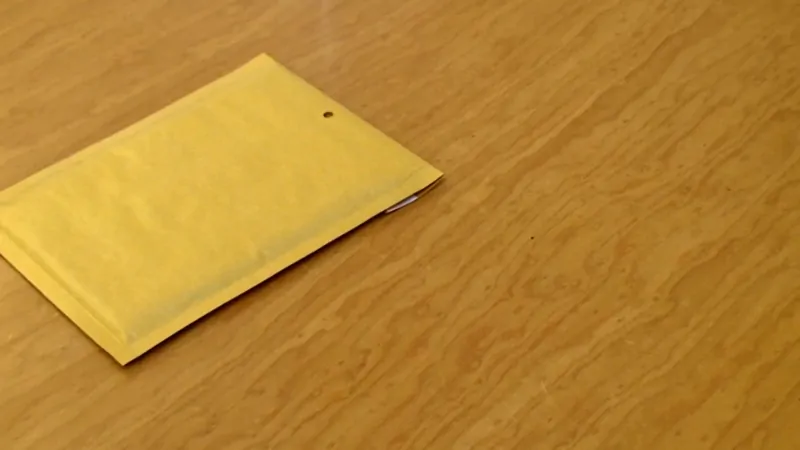When you’re writing a letter to a court, it’s not just a matter of saying what you think or feel; it’s a formal communication that can carry serious weight.
Judges and clerks read these letters every day, and they’re looking for clarity, relevance, and professionalism. Let’s go through what it takes to get it right — clearly, respectfully, and with zero room for missteps.
Table of Contents
ToggleWho Are You Writing to and Why?

Before you even open your word processor, be clear on two things: the reason for your letter and who is going to read it.
Some of the most common purposes for writing a letter to the court include:
- Character references — speaking to the good reputation or personal values of someone involved in the case.
- Sentencing requests — asking for leniency or explaining why a lighter sentence could be in the best interest of the individual and their community.
- Evidence submission — introducing a document, record, or other item that supports your claim or defense.
- Appeals or complaints — challenging a decision or pointing out a procedural issue.
- Information requests — seeking clarification about a case or court process.
Each of these scenarios requires a slightly different tone and structure, but they all call for the same foundational approach: write with clarity, show respect, and be mindful of your audience, usually a judge or court clerk.
The judge, in particular, should be addressed with formal respect, and your language needs to reflect that.
What You Need Before You Start Writing
Before you start typing, gather the essentials. You don’t want to fumble through a sentence halfway in because you’re missing a date or case number.
Here’s what to have on hand:
- Your full name and contact info: Include your mailing address, phone number, and email.
- Case details: This includes the full case number, the names of parties involved, and any prior communication you’re referencing.
- Your role or relationship to the case: Be prepared to state if you’re a witness, relative, friend, victim, or simply someone providing information.
- Court-specific rules: Check the court’s website or contact the clerk’s office to make sure you’re following their formatting and submission rules — they can vary from one jurisdiction to another. You can also find templates and writing guidance on EssayShark if you’d like examples of polished legal writing.
- Any supporting documents: If you’re including attachments, make a list of them and refer to them in your letter.
A well-prepared letter is more likely to be read and taken seriously.
Basic Format
Court letters follow a formal structure, and the format does a lot of the heavy lifting when it comes to professionalism. The typical format looks like this:
1. Your Contact Information
At the top left:
Jane Smith
123 Maple Avenue
Springfield, ST 45678
(555) 222-3333
janesmith@email.com
2. Date
Write out the full date — for example:
June 19, 2025
3. Recipient’s Details
Address it directly to the judge or relevant court official:
Honorable Judge David Thompson
Springfield District Court
789 Justice Road
Springfield, ST 45678
4. Subject Line (If Needed)
For emails or formal headings:
Re: Sentencing of John Smith, Case No. 98765
5. Salutation
Use formal greetings only. You can go with:
- Dear Judge Thompson,
- Your Honor,
Never use casual greetings like “Hi” or “Hello.”
Structure, Tone, and What to Include

Now we get into the meat of the letter — the part that actually says what you came to say. This section needs to be clear, organized, and to the point.
Keep your paragraphs short and focused. One page is ideal.
Introduction
Start by introducing yourself and stating your purpose clearly.
Example:
My name is Jane Smith, and I am writing as a longtime friend of John Doe to offer a character reference in his pending sentencing for Case No. 98765.
Mention your relationship to the person or situation and why you are qualified to comment.
Main Content
This section will vary depending on your purpose:
For a character reference
- Share how long you’ve known the person.
- Provide two or three specific examples of their positive traits.
- Avoid vague compliments — be specific.
John has consistently gone out of his way to help neighbors, including organizing a community cleanup and volunteering weekly at a food bank. He is deeply empathetic and dependable in both personal and professional settings.
For a sentencing request
- Mention how the individual contributes to their family or community.
- State why a lenient sentence would be appropriate and productive.
- Keep it respectful, not emotional.
A more lenient sentence would allow John to continue supporting his two children and maintain stable employment, which is essential to their well-being.
For evidence submission
- Reference the attached documents directly.
- Explain what they show and why they matter.
Enclosed is a signed witness statement dated May 1, 2025, which details events relevant to the incident in question. I believe this adds important context to the matter currently before the court.
For appeals or complaints
- Stick to the facts.
- Lay out the timeline clearly.
- Make a respectful request for review or clarification.
I respectfully request the court to reconsider its prior ruling due to the new information outlined in the enclosed report.
Closing
Wrap it up with a short, polite paragraph:
Thank you for taking the time to consider this letter. I am available to provide any further information upon request.
Then end with a proper sign-off:
Sincerely,
Jane Smith
[Signature if printing]Paper, Font, and Delivery — Don’t Skip the Small Stuff

Presentation may feel secondary, but in legal settings, the details speak volumes. Here’s what to keep in mind:
Paper Quality
- Use plain white or cream-colored printer paper.
- No notebook paper or fancy designs.
Font & Spacing
- Stick with a professional font like Times New Roman or Arial.
- Font size: 12-point.
- Use double spacing and standard 1-inch margins.
Signature
- Sign in blue or black ink if printing.
- If submitting digitally, use a scanned signature or a typed version — but check the court’s rules first.
Mailing or Submitting Your Letter

There are a few reliable options depending on what the court allows:
Certified Mail
This provides proof of delivery, which can be essential. Ask for a return receipt if you need confirmation that it was received.
Courier Services
If you’re short on time, this is often the fastest and most secure method.
Electronic Filing
Some courts allow electronic submission — just make sure to convert your document to PDF and follow any file-naming conventions they require.
Addressing the Envelope
Outside of the envelope should mirror the inside:
Honorable Judge David Thompson
Springfield District Court
789 Justice Road
Springfield, ST 45678
Common Mistakes That Could Sink Your Letter
Even the most well-meaning letter can miss the mark if a few basic things are overlooked:
- Not proofreading: Typos can hurt credibility.
- Using casual language: Stick with respectful, formal phrasing throughout.
- Getting the name or title wrong: Always double-check the judge’s full name and position.
- Leaving out the case number: This tiny line of text ensures your letter ends up in the right place.
- Missing deadlines: Some courts won’t even read a late letter.
Two More Real Examples
Sentencing Letter Example
Mary Johnson
789 Elm Street
Anytown, ST 12345
(555) 987-6543
maryjohnson@email.com
June 19, 2025
Honorable Judge Robert Brown
Anytown District Court
456 Court Avenue
Anytown, ST 12345
Re: Sentencing of John Smith, Case No. 67890
Dear Judge Brown,
I am writing as the sister of John Smith to respectfully request leniency in his sentencing. John is a devoted father and an active community volunteer. He coaches a youth soccer team and organizes events at our local church.
A harsh sentence would disrupt not only his life, but the lives of his two young children who rely on him daily. I respectfully ask the court to consider his consistent efforts to be a positive force in the lives of others.
Thank you for your consideration.
Sincerely,
Mary Johnson
[Signature]Evidence Submission Example
Sarah Lee
321 Oak Avenue
Anytown, ST 12345
(555) 456-7890
sarahlee@email.com
June 19, 2025
Honorable Judge Emily Davis
Anytown District Court
456 Court Avenue
Anytown, ST 12345
Re: Evidence Submission for Case No. 54321
Dear Judge Davis,
I am submitting additional evidence relevant to Case No. 54321, in which I am a plaintiff. Enclosed is a signed statement from a witness dated May 1, 2025, which supports my claims regarding the incident at the center of this case.
Please let me know if any further clarification is needed. Thank you for your time.
Respectfully,
Sarah Lee
[Signature]Final Thoughts

There’s no need to overthink every sentence, but there’s every reason to take your time, write carefully, and treat the letter with the gravity it deserves. You’re addressing a court — that calls for precision, clarity, and a sincere tone.
Once you’ve written your letter, step away for a few minutes and read it again with fresh eyes. Or better yet, have someone else read it.
If your situation touches on immigration, even a past conviction can carry added consequences, so be clear and accurate in how you present the facts.
And remember: if the stakes are high or you’re unsure about anything, even formatting, don’t hesitate to ask an attorney or check with the court directly. A small mistake shouldn’t be the reason your voice doesn’t get heard.












